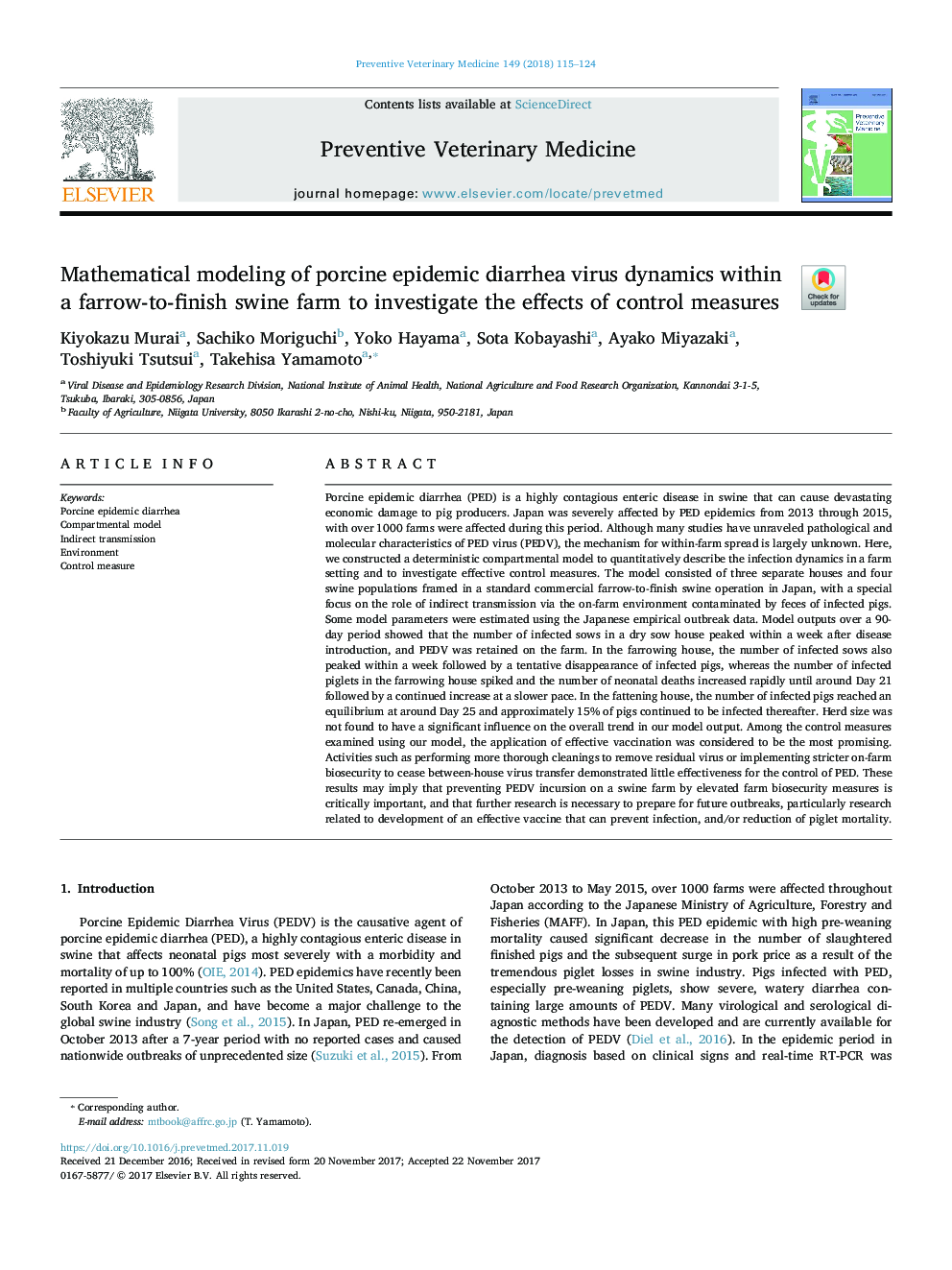| کد مقاله | کد نشریه | سال انتشار | مقاله انگلیسی | نسخه تمام متن |
|---|---|---|---|---|
| 8503611 | 1554141 | 2018 | 10 صفحه PDF | دانلود رایگان |
عنوان انگلیسی مقاله ISI
Mathematical modeling of porcine epidemic diarrhea virus dynamics within a farrow-to-finish swine farm to investigate the effects of control measures
ترجمه فارسی عنوان
مدلسازی ریاضی دینامیک ویروس اسهال اپیدمی سوسیس در یک مزرعه خوک به پایان رسید تا اثرات اندازه گیری های کنترل
دانلود مقاله + سفارش ترجمه
دانلود مقاله ISI انگلیسی
رایگان برای ایرانیان
کلمات کلیدی
اسهال اپیدمی گوشت خوک، مدل مجتمع، انتقال غیر مستقیم محیط، سلام،
موضوعات مرتبط
علوم زیستی و بیوفناوری
علوم کشاورزی و بیولوژیک
علوم دامی و جانورشناسی
چکیده انگلیسی
Porcine epidemic diarrhea (PED) is a highly contagious enteric disease in swine that can cause devastating economic damage to pig producers. Japan was severely affected by PED epidemics from 2013 through 2015, with over 1000 farms were affected during this period. Although many studies have unraveled pathological and molecular characteristics of PED virus (PEDV), the mechanism for within-farm spread is largely unknown. Here, we constructed a deterministic compartmental model to quantitatively describe the infection dynamics in a farm setting and to investigate effective control measures. The model consisted of three separate houses and four swine populations framed in a standard commercial farrow-to-finish swine operation in Japan, with a special focus on the role of indirect transmission via the on-farm environment contaminated by feces of infected pigs. Some model parameters were estimated using the Japanese empirical outbreak data. Model outputs over a 90-day period showed that the number of infected sows in a dry sow house peaked within a week after disease introduction, and PEDV was retained on the farm. In the farrowing house, the number of infected sows also peaked within a week followed by a tentative disappearance of infected pigs, whereas the number of infected piglets in the farrowing house spiked and the number of neonatal deaths increased rapidly until around Day 21 followed by a continued increase at a slower pace. In the fattening house, the number of infected pigs reached an equilibrium at around Day 25 and approximately 15% of pigs continued to be infected thereafter. Herd size was not found to have a significant influence on the overall trend in our model output. Among the control measures examined using our model, the application of effective vaccination was considered to be the most promising. Activities such as performing more thorough cleanings to remove residual virus or implementing stricter on-farm biosecurity to cease between-house virus transfer demonstrated little effectiveness for the control of PED. These results may imply that preventing PEDV incursion on a swine farm by elevated farm biosecurity measures is critically important, and that further research is necessary to prepare for future outbreaks, particularly research related to development of an effective vaccine that can prevent infection, and/or reduction of piglet mortality.
ناشر
Database: Elsevier - ScienceDirect (ساینس دایرکت)
Journal: Preventive Veterinary Medicine - Volume 149, 1 January 2018, Pages 115-124
Journal: Preventive Veterinary Medicine - Volume 149, 1 January 2018, Pages 115-124
نویسندگان
Kiyokazu Murai, Sachiko Moriguchi, Yoko Hayama, Sota Kobayashi, Ayako Miyazaki, Toshiyuki Tsutsui, Takehisa Yamamoto,
